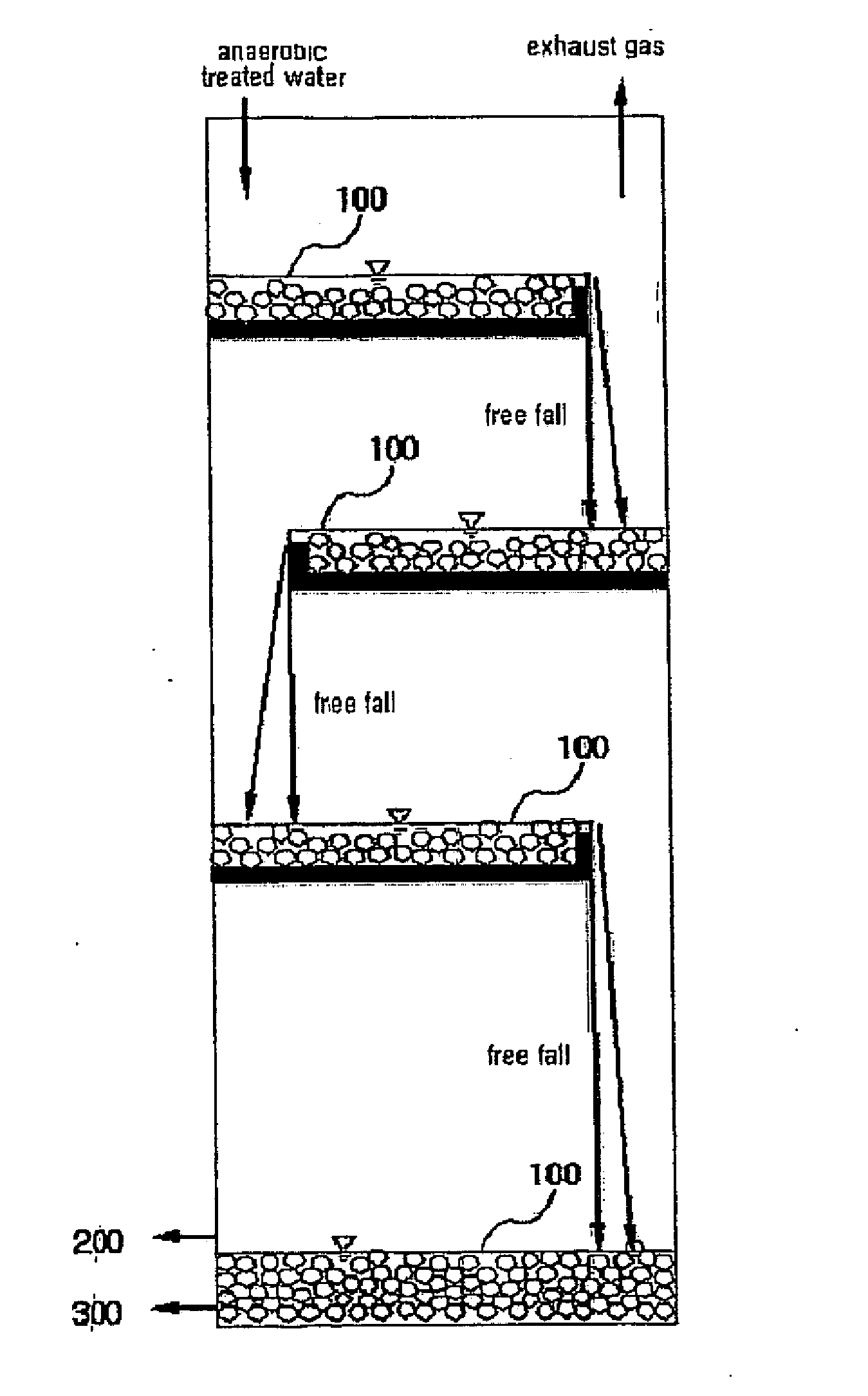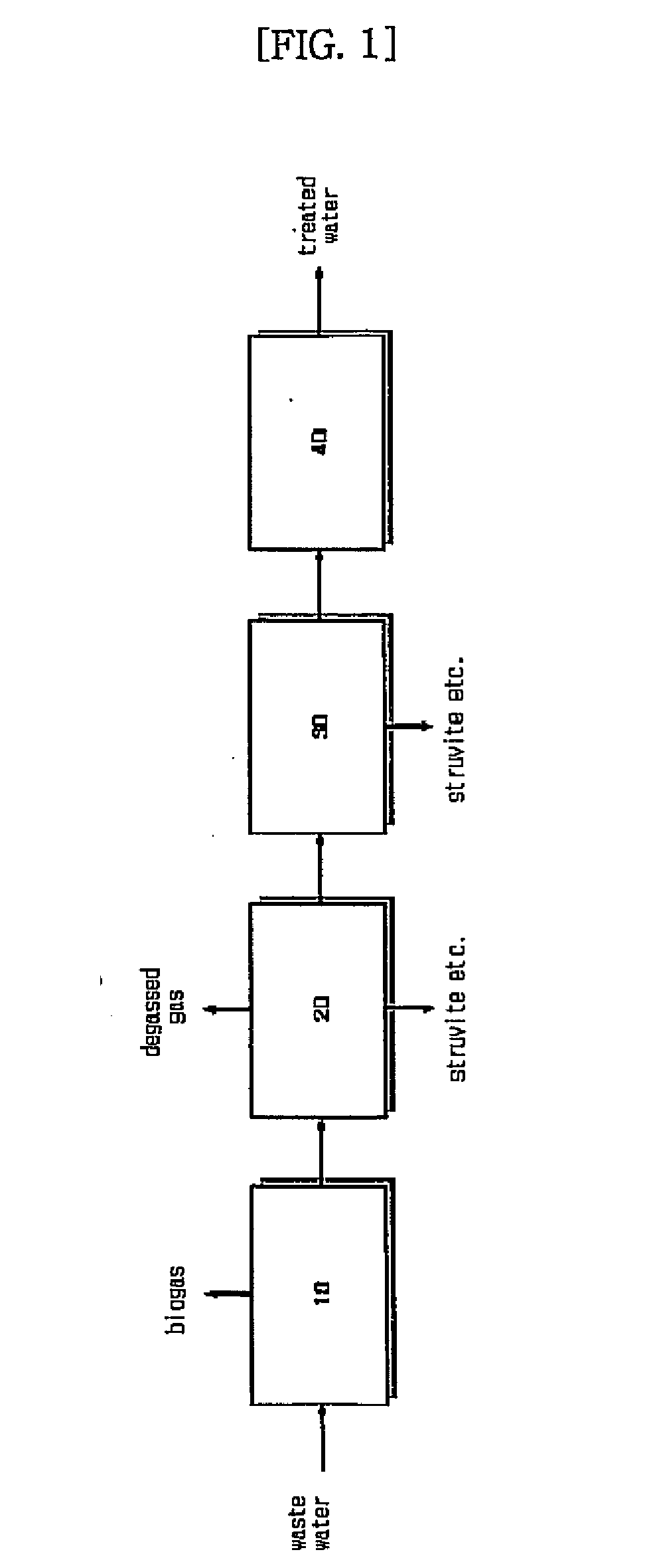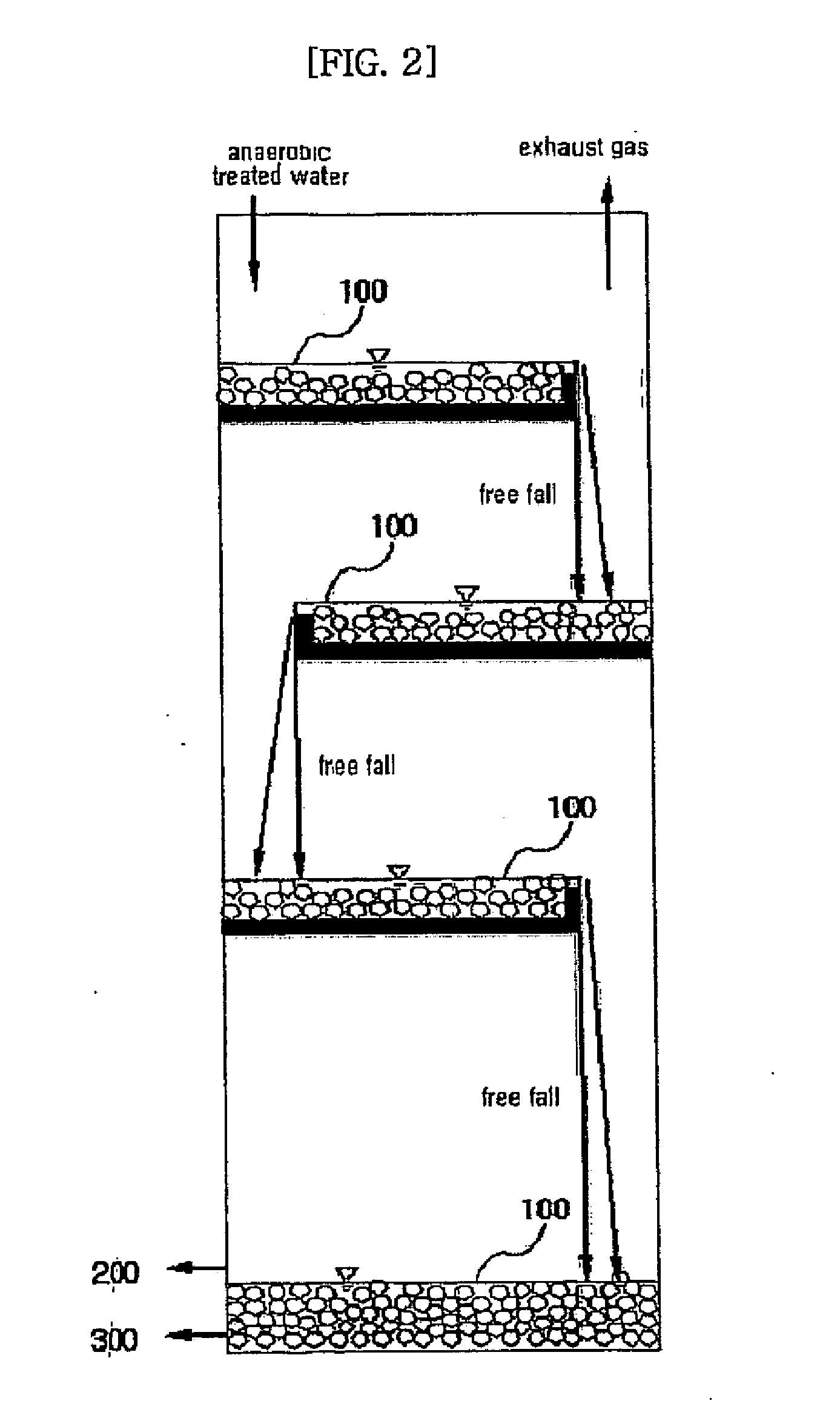Method of removing phosphorus and/or nitrogen
a phosphorus and nitrogen technology, applied in biological water/sewage treatment, multi-stage water/sewage treatment, water/sewage treatment by degassing, etc., can solve the problems of difficulty in maintaining removal efficiency and being costly as well, and achieve the effect of saving operating costs, reducing the size of the struvite retrieval facility, and easy adhesion to some type of surfa
- Summary
- Abstract
- Description
- Claims
- Application Information
AI Technical Summary
Benefits of technology
Problems solved by technology
Method used
Image
Examples
example
Example 1
[0068]An upflow hybrid anaerobic reactor with a service capacity of 1 m3 and a height of 3 m was used to treat 150 L / d of swine wastewater ridden of suspended solids for the struvite formation experiment. The carbon dioxide stripping apparatus with width of 10 cm, length of 10 cm, and a height of 245 cm has 4 stages to supply 4 times of complete mixing and dispersion. For the probable input of alkaline substance and other chemicals, a chemical supplying line was installed. Filter medium were cut from a polyethylene hose of a 5 mm external diameter for struvite attachment. These were stacked up on each stage of stripping apparatus at a height of 4-6cm. The carbon dioxide stripping was induced by streaming the anaerobic reactor effluent through the stripping tower and allowed to free fall. Separation of floating struvite crystals was done with a precipitation tank with a capacity of 250 L.
[0069]The table below shows the results of a continuous operation for a month. The mean ...
example 2
[0073]This example was operated under the almost exact same conditions as in example 1. The same wastewater and facilities were used. The only difference was that magnesium containing compounds were injected to increase the magnesium ion concentration to a 200 mg / L (8.3 mmole / L). The experiment was operated continuously for a month. The average results from different effluents are shown in the table below. The maintained pH of the crystallization tank by carbon dioxide stripping without the injection of alkaline substance was 8.8˜9.2 in the upper segment and 8.0˜8.2 in the lower segment. This once again revealed that there is no need of alkaline substance injection.
TABLE 2[mg / L]Before AnaerobicAfter AnaerobicAfter SeparationItemsTreatmentTreatmentof CrystalsCODcr31,00011,0009,250T-N3,8002,1501,462NH4—N1,2501,4801,300T-P87052012
[0074]By supplying magnesium ion in a concentration of 8.3 mmole / L, 97.7% of T-P and 2.2% of ammonium nitrogen was eliminated. A 12.9 mmole / L of ammonium nitr...
example 3
[0077]This example was operated under almost the same conditions as in examples 1 and 2. The same wastewater and facilities were used. Magnesium ion and phosphate ion were supplied in a concentration of 400 mg / L (100 mmole / L) and 3,100 mg / L (100 mmole / L) respectively for the removal of 1,300 mg / L (92.8 mmole / L) ammonium nitrogen. The experiment was operated continuously for a month with the theoretical mole ratio for struvite formation. The average results of several rounds of analysis are shown in the Table below. The maintained pH of the crystallization tank by carbon dioxide stripping without the injection of alkaline substance was 8.9˜9.2 in the upper segment and 7.8˜8.2 in the lower segment.
TABLE 3[mg / L]Before AnaerobicAfter AnaerobicAfter SeparationItemsTreatmentTreatmentof CrystalsCODcr31,00011,0007,400T-N3,8002,150 212NH4—N1,2501,480 30T-P870530 + 3,100 1
[0078]The T-P of the outflow water was below 1 mg / L (99.8%), while the ammonium nitrogen of the outflow water was ma...
PUM
| Property | Measurement | Unit |
|---|---|---|
| partial pressure | aaaaa | aaaaa |
| pH | aaaaa | aaaaa |
| pressure | aaaaa | aaaaa |
Abstract
Description
Claims
Application Information
 Login to View More
Login to View More - R&D
- Intellectual Property
- Life Sciences
- Materials
- Tech Scout
- Unparalleled Data Quality
- Higher Quality Content
- 60% Fewer Hallucinations
Browse by: Latest US Patents, China's latest patents, Technical Efficacy Thesaurus, Application Domain, Technology Topic, Popular Technical Reports.
© 2025 PatSnap. All rights reserved.Legal|Privacy policy|Modern Slavery Act Transparency Statement|Sitemap|About US| Contact US: help@patsnap.com



